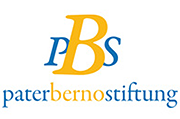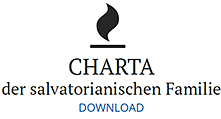
"Pilger der Hoffnung": Das Heilige Jahr 2025
Das Heilige Jahr 2025, unter dem Motto "Pilger der Hoffnung" stehend, ist ein besonderes Jahr im katholischen Glauben, das alle 25 Jahre stattfindet und auch als Jubeljahr oder Heiliges Jahr der Barmherzigkeit bezeichnet wird. Es ist ein Jahr der Gnade und Vergebung, in dem Gläubige die Möglichkeit haben, sich erneut mit Gott zu versöhnen und ihre Sünden zu bereuen. (Read it in English)
Hintergrund des Heiligen Jahres
Die Tradition des Heiligen Jahres geht zurück auf das Alte Testament, wo bereits im Buch Levitikus ein Jubeljahr alle 50 Jahre vorgeschrieben wurde. Im Jahr 1300 rief Papst Bonifatius VIII. das erste Heilige Jahr aus, um den Gläubigen die Möglichkeit zu geben, ihre Sünden zu bereuen und sich von ihren Schuldgefühlen zu befreien. Seitdem wird das Heilige Jahr alle 25 Jahre gefeiert, mit Ausnahme von einigen Sonderjahren, wie es 2016 von Papst Franziskus für das "Jahr der Barmherzigkeit" ausgerufen wurde.
Thema des Heiligen Jahres 2025
Für das 31. Heilige Jahr hat Papst Franziskus das inspirierende Motto "Pilger der Hoffnung" auserkoren. Es begann am 8. Dezember 2024 mit der Eröffnung der (symbolischen) Heiligen Pforte im Petersdom und wird am 20. November 2025 mit der Schließung der Pforte enden.
Der Fokus richtet sich auf Hoffnung, Solidarität und eine tiefergehende spirituelle Erneuerung. Dies gewinnt besonders nach den global prägenden Herausforderungen der jüngsten Vergangenheit, wie der verheerenden COVID-19-Pandemie, an Bedeutung. Papst Franziskus betonte bei der Eröffnung die Notwendigkeit, „die empfangene Hoffnungsfackel weiter brennen [zu] lassen".
Besondere Merkmale des Heiligen Jahres
Das Heilige Jahr 2025 wird ein Jahr der Pilgerfahrten sein, da viele Gläubige die Gelegenheit nutzen, um wichtige Pilgerstätten wie Rom, Jerusalem oder Santiago de Compostela zu besuchen.
In Rom werden während des Jubeljahres zahlreiche Veranstaltungen und Gottesdienste stattfinden. Die Heiligen Pforten in den vier großen Basiliken Roms – Petersdom, Sankt Paul vor den Mauern, Santa Maria Maggiore und Sankt Johannes im Lateran – werden für Gläubige geöffnet. Der symbolische Akt des Durchschreitens dieser Pforten steht für spirituelle Reinigung und Gnadenempfang.
Ein weiterer wichtiger Aspekt des Heiligen Jahres ist die Möglichkeit des vollkommenen Ablasses. Dies bedeutet, dass Gläubige durch bestimmte Gebete, Werke der Nächstenliebe oder Pilgerfahrten ihre Sünden vollständig vor Gott bereuen und Vergebung erlangen können. Der Ablass ist jedoch kein Freifahrtschein für Sünden, sondern erfordert aufrichtige Reue und die Bereitschaft, sich zu bessern.
Jahr des Dialogs und der Ökumene
Das Heilige Jahr 2025 wird auch ein Jahr des Dialogs und der Ökumene sein, da Papst Franziskus immer wieder betont, dass die Barmherzigkeit Gottes keine Grenzen kennt und alle Menschen, unabhängig von ihrer Religion, einlädt, sich auf den Weg der Versöhnung zu begeben.
Insgesamt ist das Heilige Jahr 2025 eine besondere Zeit für die katholische Kirche und ihre Gläubigen, um sich auf das Wesentliche des Glaubens zu besinnen und sich von Gottes Liebe und Barmherzigkeit berühren zu lassen. Es ist eine Einladung, das eigene Leben zu überdenken, Fehler zu erkennen und sich auf den Weg der Veränderung und des Wachstums zu begeben.
Das Logo
Das Logo symbolisiert vier stilisierte Figuren, die für die Menschheit aus allen Ecken der Erde stehen und sich umarmen, um Solidarität und Brüderlichkeit zu zeigen. Sie bewegen sich auf unruhigen Wellen, die das oft schwierige Leben darstellen und die Notwendigkeit der Hoffnung betonen, die besonders in harten Zeiten wichtig ist. Der zentrale Punkt des Logos ist ein Kreuz, das sich in einen Anker verwandelt und somit als Metapher für Hoffnung dient, die Stabilität in Stürmen bietet. Dieses Bild verdeutlicht, dass der Pilgerweg keine Einzelreise ist, sondern ein gemeinschaftlicher Weg, der dynamisch zum Kreuz führt. Das Kreuz ist dynamisch und beugt sich der Menschheit zu, als Zeichen der Gegenwart und Hoffnung.
‘Pilgrims of Hope’: The Holy Year 2025
The Holy Year 2025, under the motto ‘Pilgrims of Hope’, is a special year in the Catholic faith that takes place every 25 years and is also known as the Jubilee Year or Holy Year of Mercy. It is a year of grace and forgiveness in which believers have the opportunity to reconcile with God and repent of their sins.
Background to the Holy Year
The tradition of the Holy Year goes back to the Old Testament, where a Jubilee Year was prescribed every 50 years in the Book of Leviticus. In 1300, Pope Boniface VIII proclaimed the first Holy Year to give the faithful the opportunity to repent of their sins and free themselves from their feelings of guilt. Since then, the Holy Year has been celebrated every 25 years, with the exception of a few special years, such as the ‘Year of Mercy’ proclaimed by Pope Francis in 2016.
Theme of the Holy Year 2025
Pope Francis has chosen the inspiring motto ‘Pilgrims of Hope’ for the 31st Holy Year. It began on 8 December 2024 with the opening of the (symbolic) Holy Door in St Peter's Basilica and will end on 20 November 2025 with the closing of the door.
The focus is on hope, solidarity and a deeper spiritual renewal. This is particularly important following the globally defining challenges of the recent past, such as the devastating COVID-19 pandemic. At the opening, Pope Francis emphasised the need to ‘keep the torch of hope we have received burning’.
Special features of the Holy Year
The Holy Year 2025 will be a year of pilgrimages, as many believers will take the opportunity to visit important pilgrimage sites such as Rome, Jerusalem and Santiago de Compostela.
Numerous events and religious services will take place in Rome during the Jubilee Year. The Holy Doors of Rome's four major basilicas - St Peter's Basilica, St Paul Outside the Walls, Santa Maria Maggiore and St John Lateran - will be opened to the faithful. The symbolic act of passing through these gates symbolises spiritual purification and the reception of grace.
Another important aspect of the Holy Year is the possibility of plenary indulgence. This means that believers can fully repent of their sins before God and obtain forgiveness through certain prayers, works of charity or pilgrimages. However, indulgences are not a free pass for sins, but require sincere repentance and a willingness to amend.
Year of dialogue and ecumenism
The Holy Year 2025 will also be a year of dialogue and ecumenism, as Pope Francis repeatedly emphasises that God's mercy knows no boundaries and invites all people, regardless of their religion, to embark on the path of reconciliation.
Overall, the Holy Year 2025 is a special time for the Catholic Church and its faithful to reflect on the essentials of faith and allow themselves to be touched by God's love and mercy. It is an invitation to rethink one's own life, to recognise mistakes and to embark on the path of change and growth.
The logo
The logo symbolises four stylised figures representing humanity from all corners of the earth, embracing each other to show solidarity and brotherhood. They move on restless waves, representing the often difficult life and emphasising the need for hope, which is especially important in hard times. The central point of the logo is a cross that transforms into an anchor, thus serving as a metaphor for hope that offers stability in storms. This image makes it clear that the pilgrimage is not an individual journey, but a communal path that leads dynamically to the cross. The cross is dynamic and bends towards humanity as a sign of presence and hope.



